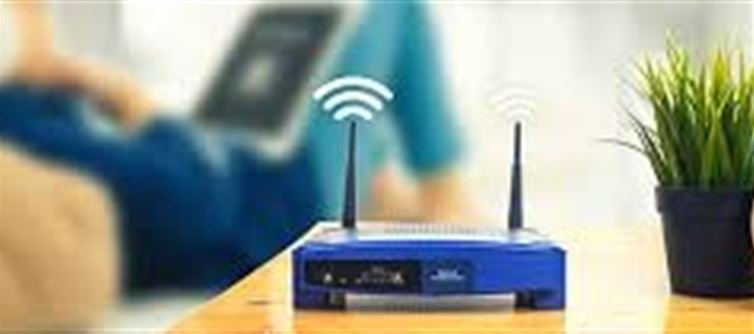
In today's hyper-connected world, cybersecurity has become more important than ever, especially when it comes to the Wi-Fi network in your home. While public Wi-Fi is often seen as risky, home Wi-Fi connections can also be vulnerable to cybercriminals. Hackers can exploit weak Wi-Fi security to gain access to personal data, IoT devices, and even infiltrate your home network for malicious purposes.
Here’s how to secure your home Wi-Fi and keep your network safe from hackers:
1. Change the Default Router Password
One of the easiest ways hackers gain access to a Wi-Fi network is through the router’s default credentials. Many routers come with preset usernames and passwords that are easy to guess or find online. Change the router’s default username and password to something unique and hard to guess.
Tip: Use a strong, complex password that includes a mix of letters, numbers, and special characters.
2. Enable WPA3 Encryption
Make sure your router is using the latest encryption standard. WPA3 (Wi-Fi Protected Access 3) is the most secure encryption protocol for home Wi-Fi networks. It ensures your network traffic is encrypted and more difficult for hackers to decrypt.
Tip: If your router supports WPA3, make sure it's enabled. If not, set it to WPA2, which is still secure but not as robust as WPA3.
3. Disable Remote Management
Some routers come with a feature that allows remote management, meaning you can access the router settings from anywhere in the world. However, this opens up an avenue for hackers to potentially exploit.
Tip: Disable remote management unless you absolutely need it. This will make it harder for anyone to access your router’s control panel from outside your home network.
4. Use a Guest Network for Visitors
If you have guests who need to use your Wi-Fi, don’t let them connect to your primary network. Instead, set up a separate guest network with its own password. This prevents visitors from accessing your main network and any sensitive data or connected devices.
Tip: Most modern routers allow you to create a guest network easily via the router’s admin panel.
5. Regularly Update Router Firmware
Router manufacturers often release firmware updates to fix security vulnerabilities. If you’re not updating your router firmware regularly, it could be vulnerable to known exploits.
Tip: Log into your router’s settings periodically and check for firmware updates. Enable automatic updates if available.
6. Turn Off Wi-Fi When Not in Use
If you’re leaving your home for an extended period or don’t need Wi-Fi at night, it’s a good idea to turn off your Wi-Fi router when it’s not in use. This prevents hackers from trying to access it during downtime.
Tip: Manually turn off your Wi-Fi or set a schedule to automatically disable Wi-Fi when you’re not using it.
7. Disable UPnP (Universal Plug and Play)
While UPnP makes it easier for devices to connect to your router, it can also create vulnerabilities. It automatically opens ports on your router, which hackers can exploit.
Tip: Disable UPnP in the router settings to prevent external devices from easily connecting to your network.
8. Use a VPN (Virtual Private Network)
A VPN encrypts your internet traffic, ensuring that even if a hacker gains access to your network, they cannot see your activity or steal your data.
Tip: Use a VPN on all of your devices connected to your home network to add an extra layer of protection, especially when browsing or conducting sensitive activities online.
9. Monitor Connected Devices
Hackers might try to infiltrate your network by connecting unauthorized devices. Most routers allow you to see a list of devices connected to your network.
Tip: Regularly check the connected devices list on your router’s admin panel. If you notice any unfamiliar devices, disconnect them immediately and change your Wi-Fi password.
10. Set Up a Firewall
A firewall acts as a barrier between your home network and the internet, helping block malicious traffic before it reaches your devices.
Tip: Ensure that your router’s firewall is enabled. You can also install a software firewall on individual devices for extra protection.
Conclusion: Stay Vigilant
Protecting your home Wi-Fi network from hackers requires ongoing vigilance and proactive steps. By following these simple yet effective security measures, you can protect your privacy, safeguard your personal data, and keep your network safe from cybercriminals. Regular updates, strong passwords, and using encryption can make a huge difference in preventing hackers from entering your home through your Wi-Fi router.
Stay safe, and always be cautious about who and what is accessing your network!
Disclaimer:
The views and opinions expressed in this article are those of the author and do not necessarily reflect the official policy or position of any agency, organization, employer, or company. All information provided is for general informational purposes only. While every effort has been made to ensure accuracy, we make no representations or warranties of any kind, express or implied, about the completeness, reliability, or suitability of the information contained herein. Readers are advised to verify facts and seek professional advice where necessary. Any reliance placed on such information is strictly at the reader’s own risk.
.jpg)




 click and follow Indiaherald WhatsApp channel
click and follow Indiaherald WhatsApp channel